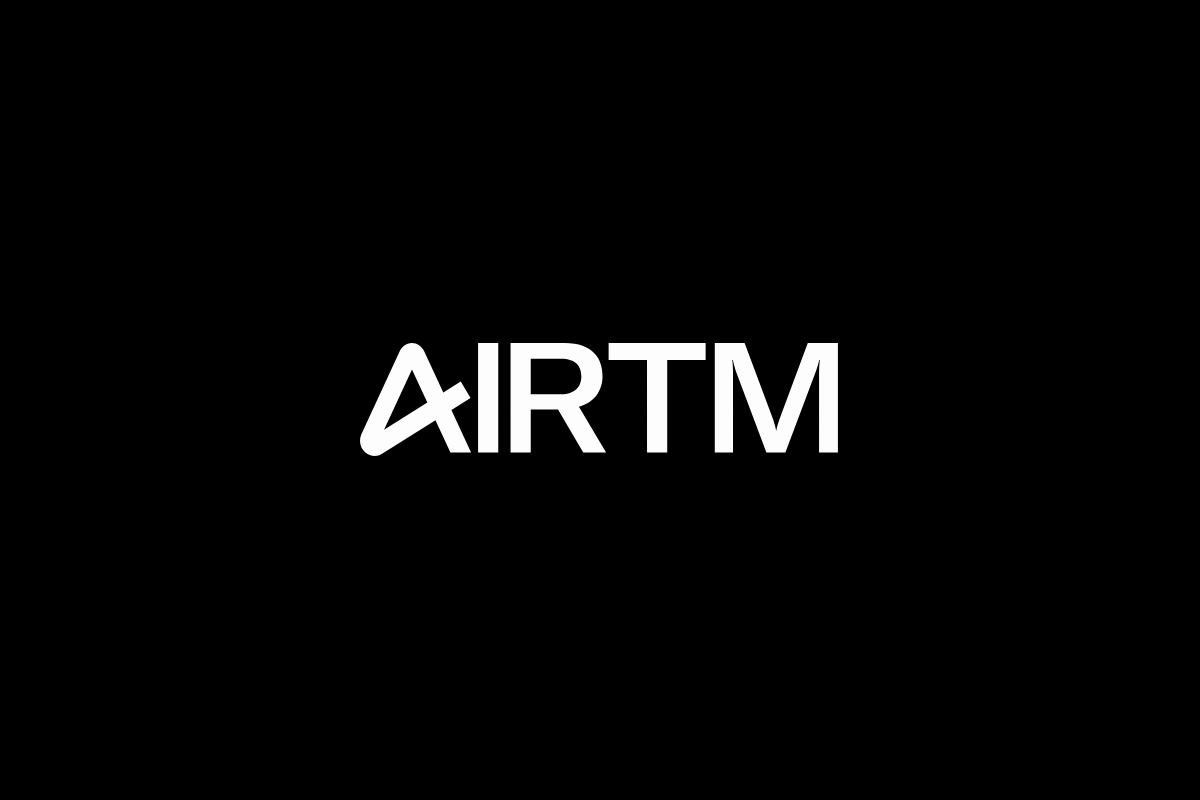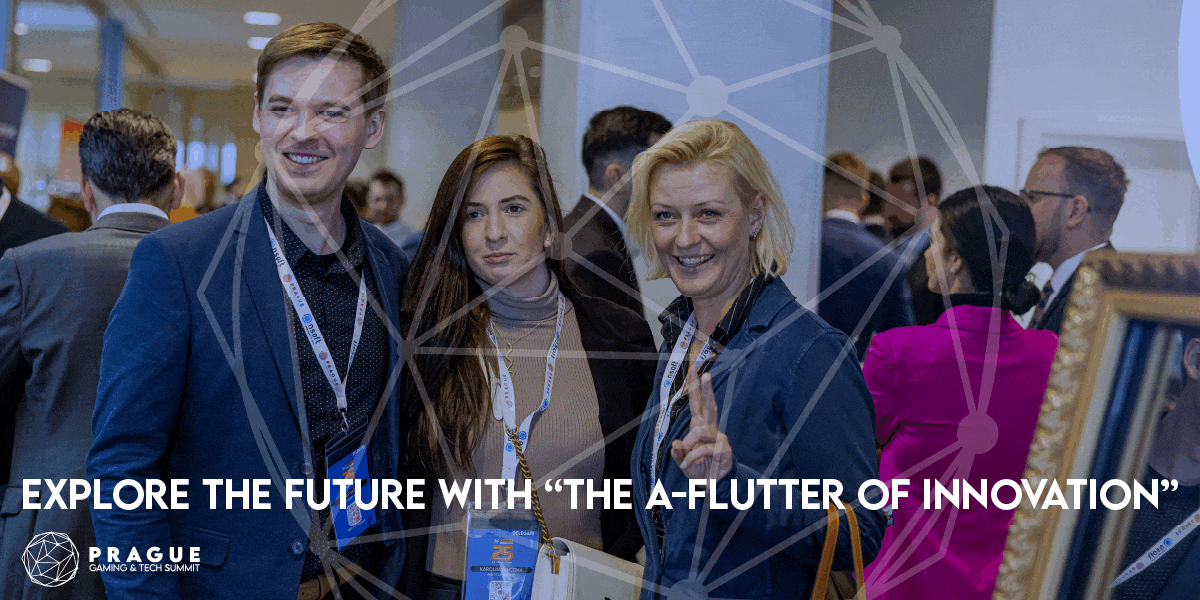Fintech
Founders and Executives at Nine India-Based Companies will Present at Algorand’s Decipher Conference in Dubai, 28-30 November

Nine India-based companies building Web3 products on Algorand will be featured this week at the annual Decipher conference hosted by the Algorand Foundation at Madinat Jumeirah in Dubai, 28-30 November.
The strong regional representation reflects strong community-building and education efforts in India led by AlgoBharat, including developer hackathons, educational sessions at technical universities, and more. These initiatives have been aimed at increasing interest and adoption in Algorand and the broader blockchain industry among developers at both startups and established corporations in India.
Featured companies from the AlgoBharat ecosystem include:
- Contrato is a solution for smart contracts and finance management for Small Medium Businesses and Startups, is the world’s first KYC embedded contracting solution powered by blockchain smart contract. Contrato is building the next generation of business transactions based on trust and decentralized finance.
- Dapps.co is an App Store for decentralized apps but with additional layers of communication / notifications, commerce (paid apps & in-app purchases), ratings, and DIDs, aims to bring seamlessness to the Web 3.0 experience.
- Dygnify is a DeFi protocol that delivers digital asset liquidity to Small Medium Business (SMB)-focused credit Fintechs while enabling global digital asset investors to discover and invest debt capital in creditworthy SMB-focused credit fintechs/lenders across high-growth emerging markets.
- EKO India Financial Services is an established Indian fintech company, which enables digital product brands to tap and collect digital payment from customers through a unique platform of deeply embedded-in-the-community micro-entrepreneurs. Over the last 15 years Eko has serviced over 50 million customers through a network of over 300k micro-entrepreneurs. Eko desires to leverage the advantages of blockchain to further democratize access to services for customers with a distributed identity solution.
- Fragments is a platform that enables users to create on-chain vaults to set up a fund, define its goals and governance, raise capital from retail investors and invest together based on the decided governance framework. It effectively offers a collective investment DeFi product with multichain fundraising, four forms of governance, and trading history of user profiles.
- Kalga Labs is a Web 3.0 platform that enables more efficient collaboration between content makers and creators. Kalga Labs’ first product, InFiction, is a first-of-its-kind solution for TV and film writers to showcase their work through a decentralized database with built-in tools, analytics, and creative capabilities.
- NFTVerse is a white label, SAAS-based platform designed to bridge the gap between Web 2.0 and Web 3.0. The platform enables enterprises, brands, celebrities, influencers, and creators to launch their own fully customizable Web 3.0 apps including NFT stores, Marketplace, Crypto wallets, and Crypto tokens by integrating with their existing Web 2.0 apps and websites.
- Nowigence is a knowledge management company that uses its Web 2.0-based Pluaris™ technology to help enterprise employees augment knowledge with information and training materials from multiple data sources. Nowigence is now transitioning to an Algorand-based blockchain solution to verify and recognize skill acquisition through decentralized proof of knowledge and proof of experience, which includes social learning, community driven peer-to-peer learning, personalized learning, gamification and reward system, and hybrid learning models utilizing events.
- Wize is a one-stop NFT infrastructure and API toolkit that can deliver a personalized and secure digital experience for businesses, DAOs, and developers, offering POAP (Proof of Attendance Protocol) NFTs, Identity NFTs, Certificate NFTs, Event Ticketing, and more. Wize enables NFT Tokenization as a Service for B2B applications and solves the Web 3.0 adoption challenges across various industry verticals with its powerful dashboard, no-code application, SDKs and APIs.
“We’re thrilled to have such strong representation from India at this year’s Decipher event,” said Anil Kakani, Head of AlgoBharat. “Each of these companies recognizes the significant advantages of the Algorand blockchain and they are just a sampling of the use cases we expect to drive the organic diffusion of Algorand in our region. India has the best developers in the world, poised to harness the power of blockchain to tackle some of the most challenging problems we face. These companies featured at Decipher are just a few of the many leading the way into Web 3.0 on Algorand!”
The following presentations will be available to livestream for free via the Algorand Foundation YouTube channel:
- 29 November @ 11:25 AM – 12:05 PM (GMT +04): EKO cofounder Abhinav Sinha will appear alongside leaders from VISA CEMEA, FlexFinTx, and AgroToken, on the topic of “Financial Inclusion at Scale: A World Tour”
- 29 and 30 November @ 1:00 – 2:00 PM (GMT +04): Founders and executives at Contrato, Dapps, Dygnify, Fragments, Wize, Kalga Labs, NFTVerse, and Nowigence will present during the Decipher pitch competitions
- 30 November @ 11:00 – 11:40 AM (GMT +04): Nowigence Acting CEO Krishna Tammireddy will participate in “Delivering Web2 to Web3 (and Beyond),” alongside leaders from Napster, TravelX, and the Global Crypto Council
The following presentation will be recorded and published on the Algorand Foundation YouTube channel following the event:
- 30 November @ 10:30 – 11:00 AM (GMT +04): Kalga Labs founder Abhisar Srivastava and NFTVerse founder Neel Kamal will speak on “India’s Creator Economy is Booming! How Web3 is Accelerating It.”
Learn more about Decipher, and download the full agenda at https://www.decipherevent.com
For media interested in a press pass for Decipher, please contact [email protected].
Fintech
SPAYZ.io prepares for iFX EXPO Dubai 2025

Leading global payments platform SPAYZ.io has confirmed it will be attending iFX EXPO Dubai 2025 on 14 to 16 January. Exhibiting at Stand 64 at Trade Centre Dubai, SPAYZ.io’s team of professionals will be on hand providing live demonstrations of its renowned payment services for payment providers. Attendees will also receive exclusive insight into SPAYZ.io’s plans for 2025 alongside early early access to its upcoming plans for the new year.
SPAYZ.io delivers a host of payment solutions that leverage the latest technological innovations and open access to the fastest growing emerging markets across Africa, Europe and Asia. Over the past year, there has been huge demand for its Open Banking and local payment method services, alongside bank transfers, mass payouts, online banking and e-wallets.
Yana Thakurta, Head of Business Development at SPAYZ.io commented: “We look forward to once again participating at iFX Dubai to expand our network of partners and clients. It’s a fantastic way to kick off the year, connecting with thousands of industry leaders from FOREX platforms to trading companies, and everything in between.
“Our key goal for iFX Dubai EXPO 2025 is to expand our portfolio of solutions and geographies. We’re using this as an opportunity to partner with like-minded entities who share our ambition to provide payment solutions that are truly global.”
Come meet SPAYZ.io’s team at the Trade Centre Dubai at Stand 64. You can also book a meeting slot with a member of a team.
The post SPAYZ.io prepares for iFX EXPO Dubai 2025 appeared first on News, Events, Advertising Options.
Fintech
Airtm Enhances Its Board of Directors with Two Strategic Appointments

Airtm, the most connected digital dollar account in the world, is proud to announce the addition of two distinguished industry leaders to its Board of Directors: Rafael de la Vega, Global SVP of Partnerships at Auctane, and Shivani Siroya, CEO & Founder of Tala. These appointments reflect Airtm’s commitment to innovation and financial inclusion as the company enters its next phase of growth.
“We are thrilled to welcome Rafael and Shivani to Airtm’s Board of Directors,” said Ruben Galindo Steckel, Co-founder and CEO of Airtm. “Their unique perspectives and proven track records will be invaluable as we continue scaling our platform to empower individuals and businesses in emerging markets. Together, we’ll push the boundaries of financial inclusion and innovation to create a more connected and equitable global economy. Rafael and Shivani bring a wealth of experience and strategic insight that will strengthen Airtm’s mission to connect emerging economies with the global market.”
Rafael de la Vega, a seasoned leader in fintech global partnerships and technology innovation, is currently the Global SVP of Partnerships at Auctane. With a proven track record of delivering scalable, impactful solutions at the intersection of fintech, innovation, and commerce, Rafael’s expertise will be pivotal as Airtm continues to grow. “Airtm has built a platform that breaks down barriers and opens up opportunities for people in emerging economies to connect to global markets. I am excited to contribute to its growth and help further its mission of fostering financial inclusion on a global scale,” said Rafael.
Shivani Siroya, CEO and Founder of Tala, is a pioneer in financial technology, renowned for empowering underserved communities through access to credit and essential financial tools. Her leadership in leveraging data-driven innovation aligns seamlessly with Airtm’s vision of creating more equitable financial opportunities. “Empowering underserved communities has always been at the core of my work, and Airtm’s mission resonates deeply with me. I’m thrilled to join the Board and work alongside such a dynamic team to expand access to financial tools that truly make a difference in people’s lives,” said Shivani.
The post Airtm Enhances Its Board of Directors with Two Strategic Appointments appeared first on News, Events, Advertising Options.
Fintech
Fintech Pulse: Your Daily Industry Brief (Revolut, Bestow, Advyzon, Tyme Group, Nubank)

The Ever-Evolving Landscape of Fintech: Top Stories Today
The fintech world continues to thrive with new developments shaping its future. Today’s highlights cover Revolut’s enhanced crypto fraud protections, Bestow’s recognition as a leading fintech company, Advyzon’s CEO receiving a prestigious award, Tyme Group’s global expansion supported by Nubank, and the rise of Israeli fintech startups. Let’s dive into the details and explore the broader implications.
Revolut Steps Up Crypto Fraud Protection
In a significant move to fortify customer trust, Revolut has announced enhancements to its crypto fraud protection systems. Leveraging advanced security risk scores, the company aims to shield users from the growing menace of crypto-related scams. The platform’s new measures will involve deeper scrutiny of transactions, sophisticated algorithms to flag potential fraud, and proactive alerts for unusual activities.
Revolut’s focus on fraud protection reflects the escalating challenges faced by fintech firms operating in the crypto space. As digital currencies gain traction, fraudsters continue to exploit vulnerabilities, necessitating robust security mechanisms. Revolut’s initiative could set a precedent for the industry, emphasizing that user safety is as critical as innovation. However, the success of these measures will depend on striking the right balance between security and user experience.
Source: Coindesk
Bestow Earns a Spot Among Top 100 Financial Technology Companies of 2024
Bestow, a digital life insurance innovator, has been named one of the Top 100 Financial Technology Companies of 2024. This recognition highlights Bestow’s transformative approach to life insurance, combining cutting-edge technology with customer-centric solutions. By simplifying the traditionally cumbersome insurance process, Bestow has made life insurance more accessible and affordable.
The accolade underscores the growing importance of insurtech in the broader fintech ecosystem. Bestow’s achievements signal a shift in consumer expectations—convenience, transparency, and technology-driven solutions are becoming non-negotiable. As insurtech continues to disrupt traditional insurance models, the emphasis will likely shift from mere digital transformation to delivering personalized and predictive services.
Source: PR Newswire
Advyzon CEO Hailin Li Wins ThinkAdvisor 2024 Luminaries Award
Hailin Li, CEO of Advyzon, has been honored with the ThinkAdvisor 2024 Luminaries Award for Fintech Executive of the Year. This award recognizes his exceptional leadership and Advyzon’s commitment to empowering financial advisors with innovative tools. Under Li’s stewardship, Advyzon has excelled in providing comprehensive technology solutions, enabling advisors to deliver superior client experiences.
Li’s recognition highlights the pivotal role of leadership in driving fintech innovation. Advyzon’s success is a testament to how visionary leadership can redefine financial advisory services. As advisors increasingly rely on technology to navigate complex markets, platforms like Advyzon are becoming indispensable. The award also serves as a reminder that the human element—inspired leadership—remains crucial even in a tech-driven industry.
Source: Business Wire
Nubank Backs Tyme Group’s International Expansion
In a strategic move, Nubank has announced an investment in Tyme Group, a digital bank with operations in South Africa and the Philippines. This partnership aims to accelerate Tyme’s growth in emerging markets, leveraging Nubank’s expertise in scaling digital banking operations. Tyme’s unique business model focuses on financial inclusion, catering to underserved populations in developing economies.
Nubank’s investment signifies a growing trend among fintech leaders to expand their footprint in emerging markets. The collaboration between Nubank and Tyme underscores the potential of digital banking to bridge financial inclusion gaps. However, challenges such as regulatory complexities and technological infrastructure limitations in these regions must be addressed to ensure sustainable growth.
Source: Business Wire
Israeli Fintech Startups Gaining Global Momentum
Israel’s fintech ecosystem is making waves internationally, with startups leveraging the country’s robust tech culture and innovation-driven mindset. From payment solutions to cybersecurity for financial services, Israeli fintech firms are attracting significant investments and partnerships globally. This trend reflects the country’s position as a hub for technological advancement and entrepreneurial spirit.
The rise of Israeli fintech startups is a testament to the country’s ability to harness innovation for global impact. However, scaling these ventures beyond local markets remains a challenge. Strategic partnerships and a focus on addressing global financial challenges will be crucial for these startups to cement their position on the world stage.
Source: Calcalist Tech
Broader Implications for the Fintech Industry
- Enhanced Security in Crypto: Revolut’s initiative highlights the need for continuous advancements in fraud prevention. The increasing complexity of scams calls for adaptive security measures that can evolve with emerging threats.
- Recognition Drives Innovation: Bestow’s accolade and Hailin Li’s award demonstrate the power of recognition in fostering innovation. Industry acknowledgment not only boosts morale but also sets benchmarks for others to emulate.
- Global Collaborations: Nubank’s partnership with Tyme Group underscores the importance of cross-border collaborations in fintech. As markets globalize, such alliances will play a pivotal role in shaping the future of financial services.
- Emerging Market Opportunities: Investments in developing economies highlight the untapped potential of these regions. Fintech companies must focus on understanding local needs and challenges to create impactful solutions.
- Tech Hubs as Catalysts: The success of Israeli fintech startups emphasizes the role of regional tech hubs in driving industry growth. Policymakers and stakeholders must nurture these ecosystems to sustain innovation.
The post Fintech Pulse: Your Daily Industry Brief (Revolut, Bestow, Advyzon, Tyme Group, Nubank) appeared first on News, Events, Advertising Options.
-

 Fintech7 days ago
Fintech7 days agoFintech Pulse: Your Daily Industry Brief (Nuvei, Google, Upvest, Gen Digital, MoneyLion)
-

 Fintech3 days ago
Fintech3 days agoFintech Pulse: Your Daily Industry Brief (Synapse, Shenzhen Institute, Visa, AutomatIQ, MeridianLink)
-

 Fintech PR6 days ago
Fintech PR6 days agoA New Era of $WUSD — Revolutionizing Stablecoins with Unmatched Security, Stability and Next-Gen Innovation
-

 Fintech PR6 days ago
Fintech PR6 days agoCathay Financial Holdings Calls for Climate Finance Mobilization to Drive the Climate Industrial Revolution
-

 Fintech PR6 days ago
Fintech PR6 days agoLanistar launches new gaming sites in Brazil as secures right to operate pending final approval on its licence
-

 Fintech2 days ago
Fintech2 days agoFintech Pulse: Your Daily Industry Brief (Revolut, Bestow, Advyzon, Tyme Group, Nubank)
-

 Fintech PR6 days ago
Fintech PR6 days agoHealthcare Revenue Cycle Management (RCM) Market Surges to USD 658.7 Billion by 2030, Propelled by 24% CAGR – Verified Market Reports®
-

 Fintech PR6 days ago
Fintech PR6 days agoInternational Communication Forum: Pathways To A Sustainable Future
















